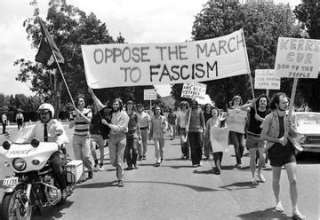written and directed by, and starring, Leah Purcell
by Wallace McKitrick
The Drover’s Wife is a powerful and important work. Reviewers have generally responded well, though often with glib phrases that undervalue the film-maker’s motives and achievement.
For example, a UK critic refers to ‘hard-scrabble lives eked out in this unforgiving land.’ Unforgiving? For thousands of years, people had been living there with an abundant economy and spiritually rich society.
Several reviewers refer to the film as a ‘western’ or ‘outback western’. This may be an Americanised genre term among art historians or critics, but ignores the fact that this drama is anchored in specific terrain in the Australian continent, in the connection of the Ngarigo people with that land, and in the armed colonial smashing of their sophisticated ways of life.
The film points to continuity and potential re-flowering of the Ngarigo people. We can’t divorce the purpose and methods of the film from these roots, or from the vitality of today’s work by Ngarigo to heal country and community. (See https://www.ngarigo.com )
Speaking of the dramatic thread featuring a newly-arrived English woman of suffragette calibre, and her police sergeant husband, an ABC reviewer writes, ‘I wasn’t overly convinced by these smaller subplots and I think they lack nuance and conviction.’ But let us look at the political role of this dramatic thread in the work. In the form of the sergeant, Purcell has provided us with an unerring image of the liberal humanitarian who is committed to the status quo. Abstract principles of justice and equality are quickly shown to be constrained and shallow in the torrential reality of class relations and settler warfare against the Aboriginal custodians of the land. His wife, Louisa, represents a more robust humanity which recognises to some extent the prevailing power relationships and motivates her to intervene – that is, to embark on activism.
Non-Aboriginal Australians of today can digest this as good advice: only by investigating our society’s root contradictions and allying oneself with courageous change-makers can one help to resolve two centuries of lies and vicious injustices and associated patriarchy. Collective activism is the crucible in which a better future is being forged.
Another critic speaks of the film being occasionally ‘heavy handed’. It’s expected of conventional critics that they praise in one breath, and state flaws in the next breath. But, as with the writing of Oodgeroo Noonuccal and Kevin Gilbert when in the mid-1900s they brought Indigenous strength into a completely White, Anglophone literary world, formalistic art criticism can be trite compared with the significance of the works.

Purcell’s first stroke of brilliance in conceiving of The Drover’s Wife (the play and then film) was to take Henry Lawson’s 1892 short story and rework it in a way that both pays tribute to Lawson and transforms its inherent, unconsidered racism and incomplete politics. She has unpicked and recombined old threads to weave a new ideological fabric.
The above remarks are about the ‘lens’ through which a work like this is viewed. Evelyn Araluen, in Firefront: First Nations poetry and power today (UQP 2020), observes:
‘Aboriginal poetry is not obliged to respond to the colonial canon, and in [these poems] we see the concentration of power and perception that Aboriginal voices bring to the institutions and textures of Australian literature’s cultural dominance. … We invent new forms: post-canonical, land-centric, kinship-connective, everyday-assertive. … Our poetries will grow as we grow, as we remember and return.’
Seen in this context, Purcell’s The Drover’s Wife is a vital part of these growing ‘poetries’. It is essential Australian storytelling, a necessary redefinition of history. It contributes to the truth-telling process urged upon us by the ‘Uluru Statement from the Heart’ and also to the declaration by this land’s First Nations peoples that connection, language and philosophy have not died despite every attempt to extinguish them during the various and continuing phases of colonialism. In recent decades, First Nations peoples have taken the lead in vigorously reshaping this country’s culture.
Purcell has created strong art from raw realities so horrible, inspiring and complex as to defy most artists’ attempts to render them with understanding and depth that can nourish the present. Her long-term Drover’s Wife project constitutes a massive achievement. It no doubt further strengthens the resolve of young First Nations writers and film-makers to believe in their voice and their right to shape forms and styles according to their own allegiances and ways of making meaning.





